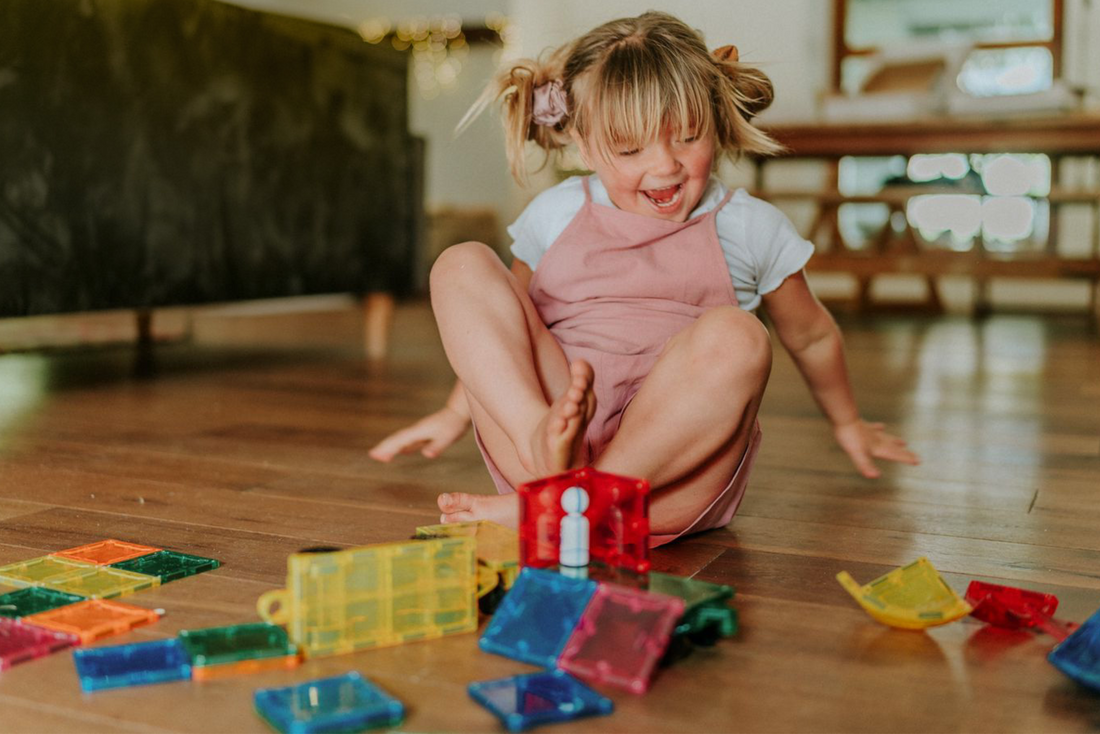Imagimags are the best magnetic tiles I have had the opportunity to interact with - due to both the variety of the pieces and the quality, in particular the strength of the magnets. Having stronger magnets allows constructions that explore deep mathematical and engineering concepts more effectively as there are fewer limits on what one can build or test
Any building tool helps children develop engineering design skills through the process of design, test, and redesign. The strong magnets in Imagimags tiles allow children to build larger, and therefore have a greater range of possibilities to test. They can build further and higher, and then redesign with different supportive configurations as the variety of tiles lends to more options. The inclusion of two pieces with wheels means designing mobile structures and captures the interest of children who love vehicles. The size of the set works well with the strength of the magnets, providing enough tiles for children to build wide or tall without running out.
Building tools in shapes with useful ratios between the sides help develop mathematical reasoning skills. The kit includes squares, rectangles half the size of the squares, large squares equal to four smaller squares, equilateral triangles, isosceles triangles with twice the altitude of the equilateral triangles, and isosceles right triangles with legs equal to the sides of the squares and equilateral triangles. Children will easily understand the difference between a right triangle and an equilateral triangle as it has a direct effect on their building. Children use two right isosceles tiles to create squares when they want more squares than come with the kit. They can easily see that two smaller squares fit on one side of a larger square, and four smaller make the same size as the larger, supporting concepts of area, perimeter, and similarity. They will quickly see that the legs of the tall isosceles are not twice the square’s unit side length, and the hypotenuse of the right triangle is not one or two (or even 1.5) units.
They also develop effective geometric vocabulary as they ask for specific pieces and have to differentiate between the different types of the same shape. For example, young children often conceive triangles first as equilateral triangles, then begin to understand that it can include other side lengths. Including three different triangles helps develop the language to differentiate the visual concept of triangle.
My younger child often creates two dimensional tilings using Imagimags, exploring concepts of angles and tessellations. The different colours allow her to create repeating patterns.
The transparent coloured tiles lead to more artistic representation and an understanding of how colours blend. My own children often layer more than one tile in different effects and look through them to see what colours they create. They love to use rainbows in their designs. The inclusion of pink tiles helps dispel the myth that colours are gendered and provide a full range of beautiful colours for children to play with.
Architecturally, the tiles help children understand the strength of a triangle in designing stronger and taller structures. The tiles with “windows” lead to a great deal of construction of homes and castles, with interesting elaborate roofs constructed from the different triangles, often used with squares.
These architectural constructions pair well with the inclusion of six people figurines in the kit, leading to elaborate imaginative play and story development so critical in children’s play. Because the strength of the magnets leads to more elaborate structures, children can craft all kinds of stories and homes. Mine have even created elaborate mazes.
Of course, we must not forget the fascination of magnets to children. They interact in ways that seem almost magical, exerting forces within their magnetic field rather than needing to directly contact ferromagnetic materials. Incorporating this near-magical, but inherently scientific, substance into play materials increases engagement, builds scientific skills of inquiry and experimentation, and feeds imagination.
Overall, Imagimags tiles are an excellent building tool that sparks thinking about science, engineering, art, and imaginative play. They feed the best forms of experiential learning through play. They develop geometric vocabulary and understanding of ratios. They encourage experimentation. And, they are the best magnetic tiles I have worked with – better than the previous industry standard.
Lisa Fontaine-Rainen, MA Ed. – Gifted Education
Gifted Learning Specialist

